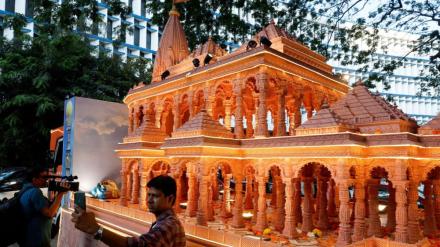By Rameesh Kailasam
As millions flock to Ayodhya, the city has an opportunity to transform into a model of sustainable growth. This demands collaboration between the government, businesses, and individuals.
Ayodhya, a place deeply woven into India’s cultural and religious tapestry, is attracting millions of devotees from domestically and internationally, creating a convergence of spirituality and pilgrimage commerce. Ayodhya is still, I would say, in the greenfield category when it comes to pilgrimage tourism and has the luxury of establish practices and infrastructure to keep it environmentally sustainable. Many leading brands have already stepped in, to support various activities besides reinforcing the necessary supply lines to keep up with the pace of pouring pilgrims. There is a unique opportunity to transform Ayodhya into a sustainable model city and the administration seems to be actively involved in addressing the potential environmental impact of the increased footfall post inauguration of the Ram Mandir.
The city has become a magnet for various brands, with several leveraging the moment, marketing their initiatives to align themselves and the immense branding opportunities and potential for new business in the times to come. Global brokerage firm Jefferies estimates a footfall of around five crore people annually and to navigate this influx, a collaboration between the government and the corporate sector is crucial in establishing the new Ayodhya as a model sustainable city. As Ayodhya embarks on its journey to become a sustainable city, it requires solutions on multiple aspects. Emerging startups like Tinge of Green have proposed various steps in this regard to address environment, air quality, water conservation, cleaning the Sarayu river, waste management, community engagement for sustainability, green homestays, and even recycling flowers and offerings. Ideally, such an effort should be taken up in all pilgrimage tourist spots with heavy footfall.
We can pick up, learn from, and collaborate with many Indian businesses that have successfully implemented these so far. For example, sustainable packaging could be a crucial area for adoption and implementation. One can draw many parallels to fix this issue. For instance, ITC’s multifaceted initiatives that span diverse areas ranging from sustainable packaging to afforestation through innovation and digitalisation is a good starting point. Its sustainable packaging solutions leverage its R&D capabilities and use raw materials that come from renewable and natural sources, such as wood and bamboo fibers that can replace single-use plastics at Ayodhya. ITC’s ‘IndoBowl’ is a sustainable substitute for single-use plastic containers commonly used in serving and delivering food, contributing significantly to plastic reduction. Its InnovPack campaign introduces bioseal coating technology, offering an environmentally-friendly alternative to traditional plastics and poly films.
In Ayodhya, substantial efforts are underway to manage solid waste efficiently, with a solid waste plant near completion. India’s largest flexible packaging and solutions company, Uflex, provides a good model for recycling through innovative technologies, as it has established industrial facilities for recycling MLP (multi-layer mixed plastic) waste and has recently made strides in enzyme-based delamination and recycling technology designed specifically for aseptic packaging. Another example of recycling is the Hyundai Motor India Foundation’s (HMIF) initiative of utilising factory waste, upcycling 43,370 benches and desk sets. This has benefited 331 schools and 433,000 school children and thus serves as an example of sustainable practices and waste management that can act as a potential blueprint for Ayodhya’s waste recycling initiatives. Initiatives from startups like Shayna Ecounified Private Limited, which is working with various cities to convert plastic waste into walking tiles in pavements, bins, and seating furniture for parks, is worthy of a mention.
One of the major waste management challenges stems from the lack of widespread sorting at the source. Ayodhya could possibly adopt ITC’s Well-being Out of Waste (WOW) programme that aims to raise awareness about source segregation, recycling, reusing, and implementing effective waste management systems. This programme has collected 64,000 metric tonnes of dry waste across 1,270 wards in various cities and districts across the country with a participation of 2.2 crore citizens from more than 55 lakh households and approximately 2,100 corporates.
Prime Minister Narendra Modi, during his ‘Mann ki Baat’ address in 2018, mentioned the need for the country to emulate The Punyam Poonkavanam initiative at Sabarimala to promote cleanliness. He commended the efforts undertaken by volunteers and staff engaged in keeping the Lord Ayyappa Temple and its surroundings clean.At the 2021 UN Climate Change Conference (COP26), PM Modi announced Mission LiFE to bring individual behaviours at the forefront of the global climate action narrative and strive to replace the ‘use-and-dispose’ economy driven by mindless and destructive consumption with a circular economy. It is therefore the responsibility of pilgrims to ensure that the punya they earn upon visiting the temple and holy city is retained by them being responsible and behaving in an ecologically conscious way.
The author is the CEO, Indiatech.org. Views expressed are personal.
